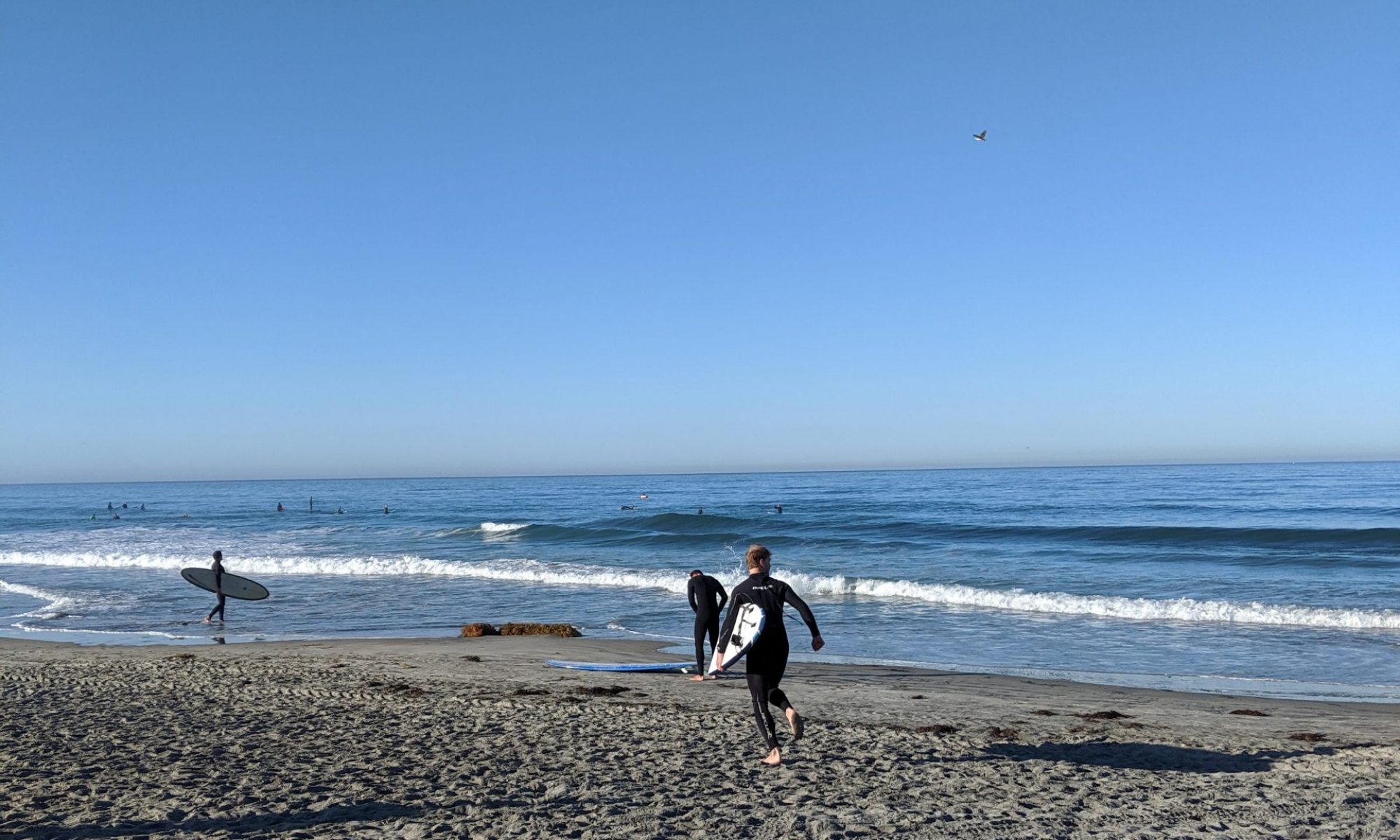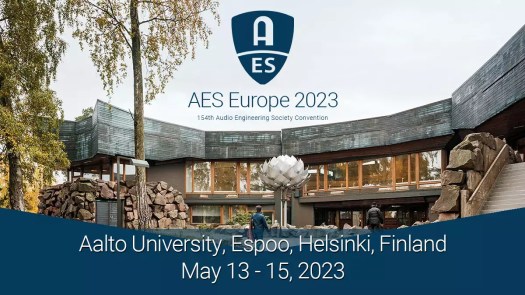
Best Paper Award


I Like Waves

Sebastian J. Schlecht and I are Paper Co-Chairs for the upcoming AES Spring Convention in Helsinki, Finland. The submission deadlines for the different paper categories start at January 27, 2023. All details about the submission process can be found here.

I am involved in the organization of two upcoming conferences: The next AES convention in May and the 3rd Workshop on the Internet of Sounds in September.
Needless to say, I look forward to many high-quality submissions, (especially) about spatial audio and the internet of audio things.
More details on the conference websites (see links below).

Call for Submissions (deadlines in February)

Call for Submissions (deadlines in April May)

Summer starts in April in Germany.
I’ve designed the curriculum for the University of Erlangen-Nuremberg’s first Audio Processing for the Internet of Things course and will be teaching via Zoom. Details here. The course is only open to FAU students, but I’m open to sharing my resources with colleagues and students interested in this field.
While doing some background research for a future publication, I quickly checked the search trends for a few keywords. To my surprise, just a few days ago, one of my favorite keywords Spatial Audio had a spotlight moment not seen in 5 years:
A closer look revealed that the spike happened on June 23rd. What happened there that made so many people google for spatial audio?
The Apple Worldwide Developers Conference happened. It was announced that the AirPods Pro will get a big upgrade this fall—a “spatial audio” feature! I presume lots of tech savvy people were curious to find out more about spatial audio. Let’s see how this trend continues …
Finally, there is an introductory book on the theory behind Ambisonics and its practical applications:

From the preface:
Despite the Ambisonic technology has been practiced in the academic world for quite some time, it is happening now that the recent ITU, MPEG-H, and ETSI standards firmly fix it into the production and media broadcasting world. What is more, Internet giants Google/YouTube recently recommended to use tools that have been well adopted from what the academic world is currently using. Last but most importantly, the boost given to the Ambisonic technology by recent advancements has been in usability [..] the usability increased by plugins integrating higher-order Ambisonic production in digital audio workstations or mixers. And this progress was a great motivation to write a book about the basics.
The book is dedicated to provide a deeper understanding of Ambisonic technologies, especially for but not limited to readers who are scientists, audio-system engineers, and audio recording engineers. As, from time to time, the underlying maths would get too long for practical readability, the book comes with a comprehensive appendix with the beautiful mathematical details.
This book closes a big gap – I am not aware of any existing comprehensive introductory literature on this topic. So finally, a book I can safely recommend to colleagues who want to learn more Ambisonics. Beside the hardcopy, Franz and Matthias also managed to make the ebook version available as open access!
Last week I finally received my Raspberry Boom I backed at kickstarter a few months ago. The Raspberry Boom is an infrasound measurement device for measuring inaudible low-frequencies in atmospheric and man-made events such as rocket launches, explosions, volcanic eruptions, storms, tornadoes, lightning, etc. The journal Physics Today just had an article on that topic.
I hooked up the boom circuit to a Raspberry Pi Zero W which is doing data collection and transmission to the global citizen science network for further analysis and data fusion, such as for earthquake detections. You can check out my station’s real-time data here.
At the moment the boom sits inside its housing on the window of my home office. I still need to find a permanent place to minimize the likelihood of it falling down and the influence of low-frequency wind turbulences.

#RT A NEW #RaspberryShake BOOM #homeScience #monitor is online in- #California!: AM.R3609
Get yours: https://t.co/EJKlmcHPV4
— Raspberry Shake (@raspishake) August 8, 2018
today I just found out by surprise that my website's web-host service has shut down for good. What a bummer.
— Nils Peters (mastodon.social/@npeters) (@Mr_Nilson) April 3, 2014

A new spatial audio book is about to appear: The Technology of Binaural Listening, edited by Jens Blauert.
The book includes contributions from 15 research laboratories in Europe and in the US which are part of the research initiative “Aural Assessment by Means of Binaural Algorithm” (AABBA). The table of content looks really exciting and I hope to get a printed version as soon as possible.
Between The Ahnert and The Blauert, there is a new book in my library: The Ahrens:

From the description:
This book treats the topic of sound field synthesis with a focus on serving human listeners though the approach can be also exploited in other areas such as underwater acoustics or ultrasonics. The author derives a fundamental formulation based on standard integral equations and the single-layer potential approach is identified as a useful tool in order to derive a general solution. He also proposes extensions to the single-layer potential approach which allow for a derivation of solutions for non-enclosing distributions of secondary sources such as circular, planar, and linear ones. Based on above described formulation it is shown that the two established analytic approaches of Wave Field Synthesis and Near-field Compensated Higher Order Ambisonics constitute specific solutions to the general problem which are covered by the single-layer potential solution and its extensions. The consequences spatial discretization are analyzed in detail for all elementary geometries of secondary source distributions and applications such as the synthesis of the sound field of moving virtual sound sources, focused virtual sound sources, and virtual sound sources with complex radiation properties are discussed.
Another gem is the accompanied website, where Jens provides the Matlab source code for all Matlab figures used in this book – bravo Jens.